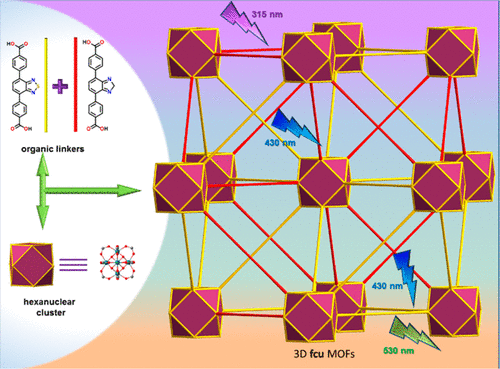

Herein, we report a new light-harvesting mixed-ligand Zr(IV)-based metal-organic framework (MOF), with underlying fcu topology, encompassing the [Zr6(μ3-O)4(μ3-OH)4(O2C−)12] cluster and an equimolar mixture of thiadiazole- and imidazole-functionalized ligands. The successful integration of ligands with similar structural features but with notable chemical distinction afforded the attainment of a highly efficient energy transfer. Notably, the very strong spectral overlap between the emission spectrum of benzim-idazole (energy donor) and the absorption spectrum of thiadiazole (energy acceptor) provided an ideal platform to achieve very rapid (picosecond time scale) and highly effi-cient energy transfer (around 90% efficiency), as evidenced by time-resolved spectroscopy. Remarkably, the ultrafast time-resolved experiments quantified for the first time the anticipated close proximity of the two linkers with an aver-age distance of 17 Å. This finding paves the way for the design and synthesis of periodic MOFs affording very efficient and fast energy transfer to mimic natural photosynthetic systems.
